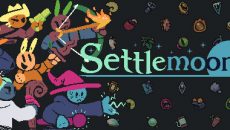Vernon Gibbs
Connector Staff
“Monster Hunter: Generations” is a celebration of all its predecessors. Released in the U.S. on July 15, 2016, “Generations” is the eighth localized installment of the “Monster Hunter” series. “Monster Hunter” is exactly what it says on the tin: players hunt monsters. Armed with nothing but their wits and some bottom-feeder equipment, players are tasked with fulfilling the role of a village’s resident Hunter, growing in power with every successful mission. With the game’s brutal—yet fun— gameplay, it provides an endless experience that can be carried in your pocket.
Right off the boat, the Hunter is given a staggering amount of customization. With 14 separate weapons at their disposal, players are encouraged to try every one of them out as they find a playstyle that suits them best. From the colossal blades that can tear through monsters with ease to massive staffs that can send the Hunter flying through the air vault through the air, every weapon type has something going for it, and it is up to the Hunter to determine which one they should bring on a hunt.
The monsters themselves are nothing simple either. Each one is recognizable in both their appearance and what threat they pose, with special mentions having their own theme play in the background. There is not a single pushover in the entire roster: every large monster is hostile towards the Hunter and will do everything in their power to knock them down to the ground. They can have more than just claws and muscle to defend themselves, holding elemental properties that they wield in battle. From throwing lightning, flames, poison or even explosives, they live up to their names by being truly threatening monsters.
Progression throughout the course of “Monster Hunter” is entirely dependent on what gear the player has equipped. The Hunter may start out with only a flimsy set of armor, but he can create new gear with the materials of monsters they kill on missions. For example, taking down a fire-breathing dragon gives just the right materials to make a sword engulfed in flames. These sets of equipment also carry on the traits seen from monsters and grant the player their strength. A venomous monster’s armor can protect from poison, a gluttonous monster allows the Hunter to scarf down food faster and a giant crab’s shell can bolster defense. If having 14 weapons is overwhelming, then having to pick and choose the proper armor can be a daunting task.
Despite the limitations of the 3DS, “Generations” does its best to make everything visually appealing. From the backgrounds of the hunting grounds to the color design behind every monster, everything pops from the background and can be easily seen. The music behind it all is also fitting, keeping up with the blood-pumping action while showing the personality behind each location and the monsters living within them. When the dreadful tune of the aptly named Deviljho starts playing, the game needs no other signal to tell the player they have to start running. Both the art and music direction plays perfectly with the gameplay and make it truly immersive for the player.
However, the biggest draw for “Monster Hunter” is its community. With a 4-player co-op mode, Hunters from all around the world are encouraged to help others, whether they be returning veterans or complete greenhorns. There is an additional portion to the game entirely dedicated toward these multiplayer missions, though they can also be done solo. Despite the seemingly ludicrous advantage given to players by having three allies in a hunt, the multiplayer quests are balanced accordingly with special variants of monsters that can easily wipe a crew of four veteran Hunters. But it is through such challenges that players are able to work together, making for a night of hunting that never seems to end.
“Monster Hunter: Generations” is not satisfied with the traditional “Monster Hunter” formula, though. Along with bringing many monster species back from previous entries, the Hunter is given a new tool to use on their hunts: Hunting Styles. With four options to choose from, the Hunter can gain strengths in one area at the cost of somewhat limiting their attack options. Hunting Arts are also brought in, giving the Hunter a gauge system in which they can release powerful attacks or buff themselves with special abilities. The system gels well with the “Monster Hunter” formula, but it can be jarring for returning players to have rather bizarre changes to how they hunt. The additions are a mixed bag, but should not be treated as something bad.
Sadly, no game is without its faults. As enjoyable as “Generations” is, there is a distinct skill floor for all newcomers. This typically comes in the form of “that one monster,” introduced right after the player gets comfortable with the game. It does not matter if the Hunter can have a team of four carry him: if he cannot hunt this monster in a fair manner, then he will be no more than a liability to his hunting partners.
While understandable, this skill floor is set noticeably higher than most other games, lending some to compare “Monster Hunter” to the likes of “Dark Souls.” The early hours of the game are also the most boring, as the Hunter must go through simple and easy quests before the difficulty begins to ramp up. Between the opening hours of mediocrity and a sudden skill floor, it is unsurprising that many greenhorns call it quits there.
Overall, “Monster Hunter: Generations” is an enjoyable and addicting experience as one climbs through the ranks and builds their gear for the next big hunt. The single player mode is worth over 20 hours on its own, and the multiplayer can keep one playing for at least 50 hours. For those looking for a game to invest their time in, “Monster Hunter: Generations” will make it worth their while.
Final Grade: B+



